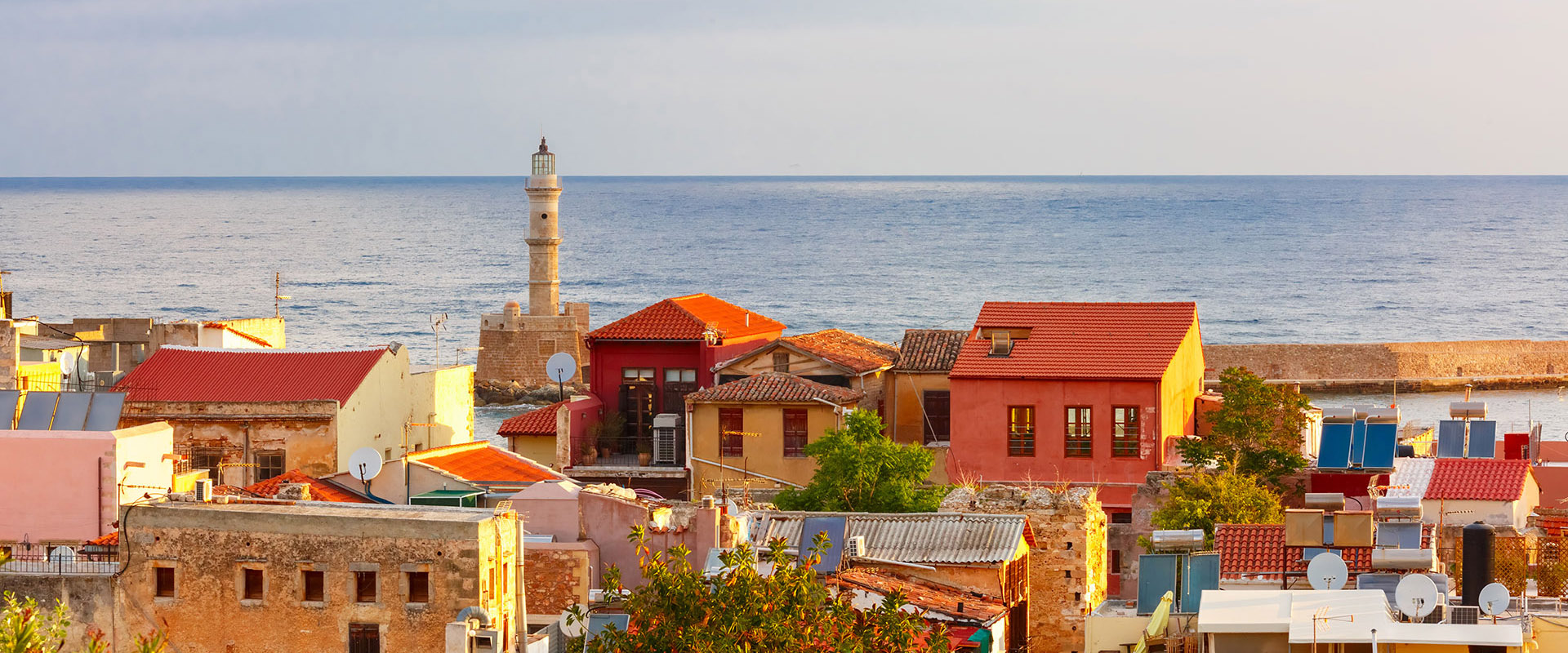Chania’s Old Town is considered the most beautiful urban district on Crete, especially the crumbling Venetian harbour. The borders of the Old Town are the mostly destroyed old Venetian wall (and bulwarks) and this has been the cradle of all the civilizations which were developed in the area. The central part of the old town is named Kasteli and has been inhabited since Neolithic times. It is located on a small hill right next to the seafront and has always been the ideal place for a settlement due to its secure position, its location next to the harbour and its proximity to the fertile valley in the south. Nowadays it is a bit more quiet than the neighbouring areas of the west part of the district. The Splantzia quarter (next to the east part of Kasteli) is also largely untouched and very atmospheric. A plan for its future development is now being under consideration.
The main square of the Old Town (next to the west end of Kasteli) is the Eleftherios Venizelos Square. It is the heart of the touristic activities in the area. Next to this (on the west side) lies the Topanas district, which used to be the Christian part of the city during the Turkish occupation. Its name comes from the Venetian ammunition warehouse, which was located there. The Jewish quarter was located at the north-west of the Old Town, behind the harbour and within the borders of Topanas. The whole Topanas area is generally very picturesque, with many narrow alleys and old charming buildings, some of which have been restored as hotels, restaurants, shops and bars. This makes it a lively and colourful place especially during the warm period (April-October). In the winter, it still remains a center of activities (especially for nightlife) but in a more quiet and atmospheric way.
Finally, a very distinctive area of the Old Town is the harbour itself and generally the seafront. Akti Tompazi, Akti Kountouriotou and Akti Enoseos all feature several historical buildings and a thriving nightlife. The main street that combines the modern town with the old town is Halidon Str.

The present light-house, rebuilt during the Egyptian occupation (1821-1841), is different from the original and is rather reminiscent of a minaret, as regards its shape and the inside stone staircase leading to the balcony and the glass tower.
The harbor was first constructed between 1320 and 1356 by the Venicians to protect the City. Certain problems were caused to the harbor by the north winds and the silt deposits in the basin from rain waters and sewage. To solve these problems a jetty was built with an opening for the renewal of water. At the entrance to the harbor, there is a light –house, which was rebuilt in the period of the Egyptian occupation as it is seen today.
In the Turkish occupation, the Church had been converted into a soap-factory and took its present form in 1860. The architectural elements of the temple are associated more with the tradition developed in the period of the Venician occupation. The east wall is decorated with large and impressive religious paintings, the works od G. Kalliterakis, G Stravrakis, E. Tripolitakis and D. Kokotsis.
The monastery of the moks od Frangiskan (16th century) houses the Archeological Musuem of Chania. Findings from different parts of the county of Chania are exhibited in the museum rooms depicting the history of the area from Neolothic to Roman times.
Open: 8.30 – 15.00 except Monday
Tickets: 1€ – 2€ – 3€